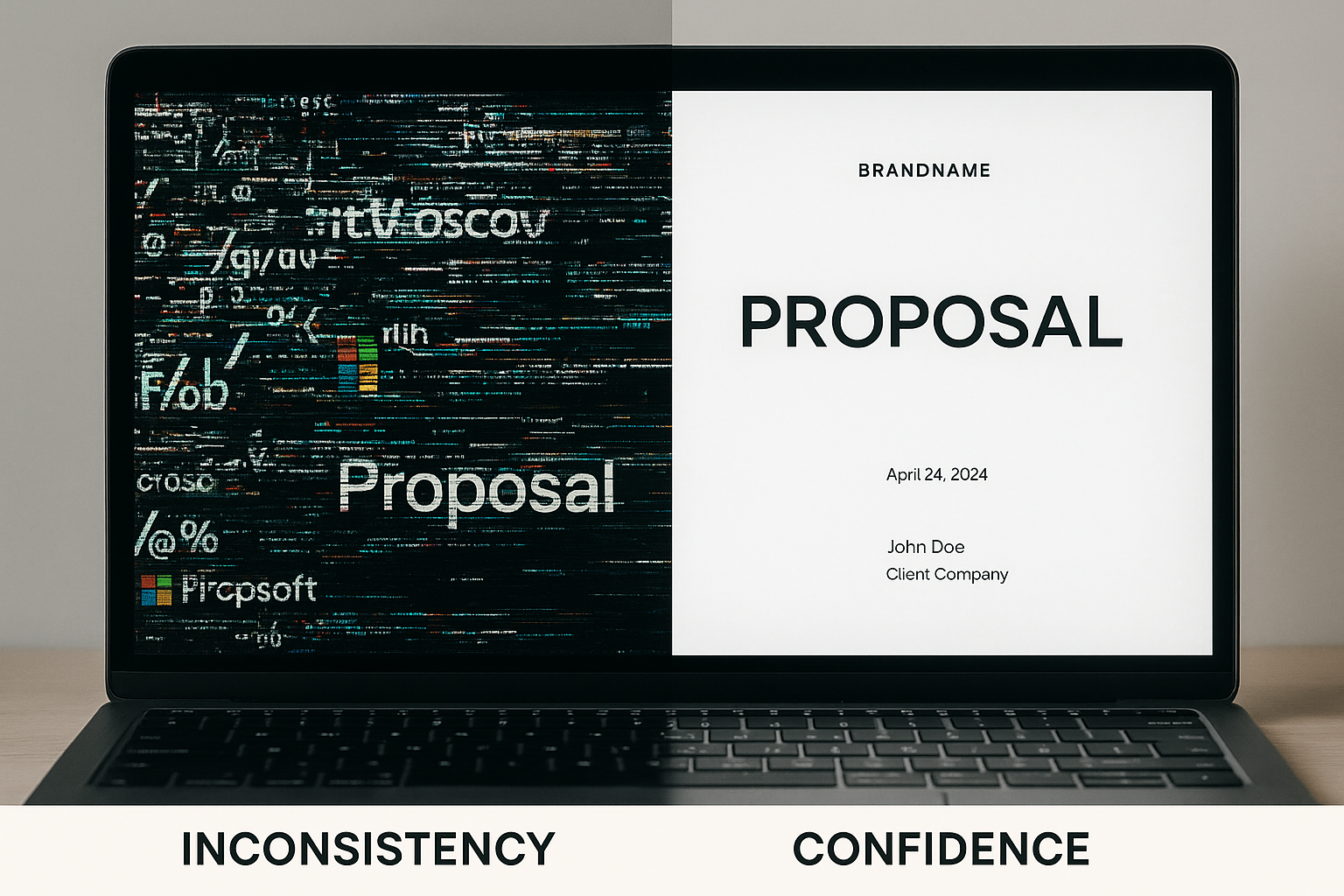The Proposal Deadline Death Spiral: Stop Trading Sleep for Submissions
 Talewind
·
3 minute read
Talewind
·
3 minute read
Ask any proposal manager what the end of quarter feels like, and the answer is predictable: chaos.
Late nights. Last-minute edits. SMEs pulled into “urgent” reviews at 10 p.m. Sellers patching decks instead of closing deals. The result? Proposals go out under pressure, riddled with errors, while the team runs on fumes.
This is not a plan. It is a fire drill. And your team is paying the price.
The Human Toll of Proposal Chaos
Proposal dysfunction doesn’t just hurt revenue — it drains the people responsible for generating it.Proposal managers routinely log 60-hour weeks to hit submission deadlines.
SMEs grind through 10 to 15 rushed reviews every week, usually with little context.
Reps spend more time formatting slides than building pipeline.
¹ A 2024 study by CUNY Public Health found burnout costs U.S. employers between $4,000 and $21,000 per employee per year in lost productivity and missed work. For a 1,000-person company, that’s nearly $5 million annually wasted — and proposal chaos is a silent contributor to that bill.
Why Deadlines Spiral Out of Control
This spiral isn’t caused by lazy reps or overbearing SMEs. It’s baked into the process itself.
Fragmented inputs mean sellers drop incomplete requests, SMEs are looped in through Slack or email with no context, and nobody sees the full deal until the last minute.
Manual formatting makes every proposal a one-off. Branding, pricing, and disclaimers are patched together manually, producing inconsistent, error-prone files.
Approval chaos ensures legal and finance enter too late in the cycle, with everything marked “urgent,” forcing after-hours reviews.
And the entire system runs on a fire-drill mentality — reactive instead of planned. The cycle repeats every quarter.
The Real Cost in Numbers
- 53% of employees reported burnout in 2024, with inefficient systems and long hours as leading causes (Grant Thornton).
- Sellers spend less than 30% of their time actually selling, with proposals chewing up prime hours (Salesforce).
- Proposals that sit beyond 21 days are 70% less likely to close (Forecastio).
- Companies with shorter cycles of 30–45 days see up to 38% higher velocity than those with extended cycles (First Page Sage).
Quick Self-Check: Are You in the Death Spiral?
Your process is broken if two or more apply:
- Your last proposal was sent past midnight.
- Approvals live in inboxes, not workflows.
- Reps avoid “the system” because it slows them down.
- You manually fixed a logo, client name, or pricing table in the last month.
- “Proposal Sent” is still the biggest stage in your pipeline.
If this sounds familiar, you don’t have a proposal process. You have a fire drill.
Breaking the Spiral: The Orchestration Playbook
Escaping deadline chaos isn’t about working harder. It’s about orchestrating smarter.
Centralize intake. Reps answer structured deal questions, and proposals generate automatically with pre-approved content.
Eliminate manual formatting. Templates lock fonts, logos, and spacing. Case studies, disclaimers, and pricing pull dynamically from a single source of truth.
Automate approvals. Reviews only trigger when deal parameters require them. Standard terms are approved once, then reused dozens of times.
Orchestrate collaboration. SMEs get structured requests with full context, and all comments and sign-offs happen in one workspace.
The Ripple Effect
Breaking the spiral changes the trajectory of the business.
Win rates rise. Buyers choose vendors who respond first with clean, compliant proposals.
Cycle times shrink. Faster proposals mean more deals closed per quarter.
Forecasts improve. Pipelines reflect reality, not inflated optimism.
This isn’t incremental. It compounds quarter after quarter.
What Out of the Spiral Looks Like
Picture this:
A rep answers a short intake form. A proposal builds itself in minutes, brand-perfect and compliant. Pricing pulls from one source of truth. Legal reviews only when parameters cross defined thresholds. The final doc is ready within hours, not days.
Now imagine scaling that across 100 proposals a month. That’s thousands of selling hours reclaimed, millions in revenue accelerated, and a team that no longer survives deadlines but drives growth.
Your Next Steps
Here’s how to start breaking the spiral today:
- Audit the last five proposals. How long from request to delivery? How many hours after 6 p.m. or on weekends? How many manual edits to logos, names, or pricing?
- Spot the patterns. Are approvals always late? Do the same bottlenecks repeat?
- Pilot one fix. Automate a single approval flow. Centralize one content block like legal terms or pricing. Set a 7-day SLA for proposal delivery.
Small wins prove impact fast. From there, orchestration scales.
The Bottom Line
Proposals should close deals, not destroy sleep.
Until you fix the process, every end of quarter will feel like a survival exercise that drains talent, kills win rates, and bleeds revenue.
Stop trading sleep for submissions. Build a proposal process that scales, protects your people, and accelerates your revenue.
See how Talewind eliminates proposal chaos
¹ CUNY Public Health. The Health and Economic Burden of Employee Burnout (AJPM, 2024). Link² Grant Thornton. State of Work in America Survey Report, 2024. Link
³ Salesforce. State of Sales Report, 2023. Link
⁴ Forecastio. How To Calculate Win Rate in Just a Few Steps, 2025. Link
⁵ First Page Sage. Sales Pipeline Velocity Metrics, 2025. Link



